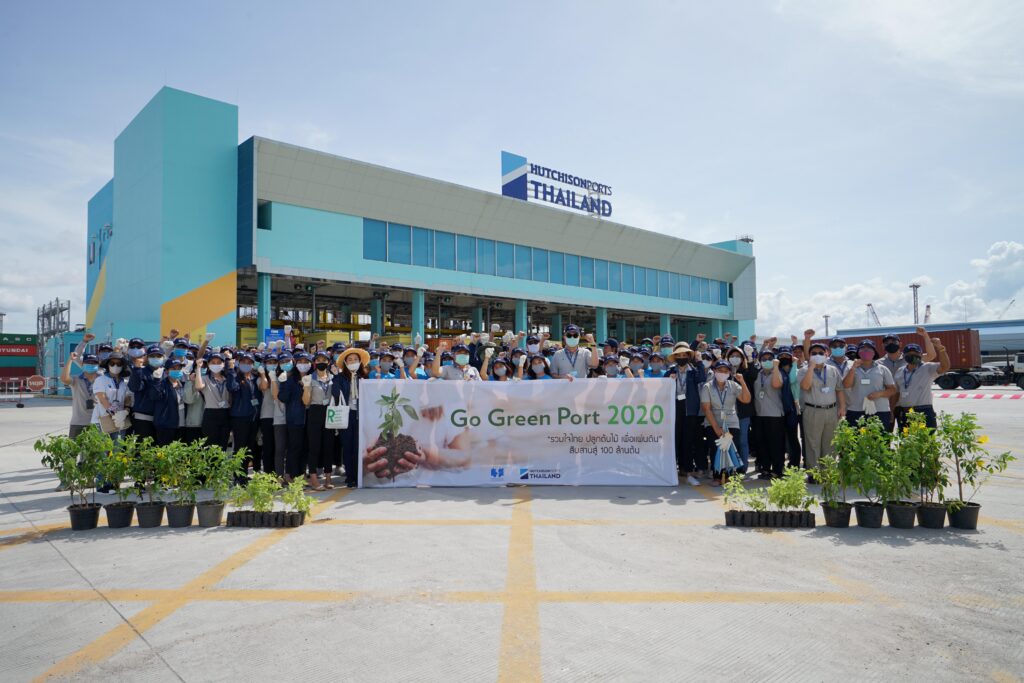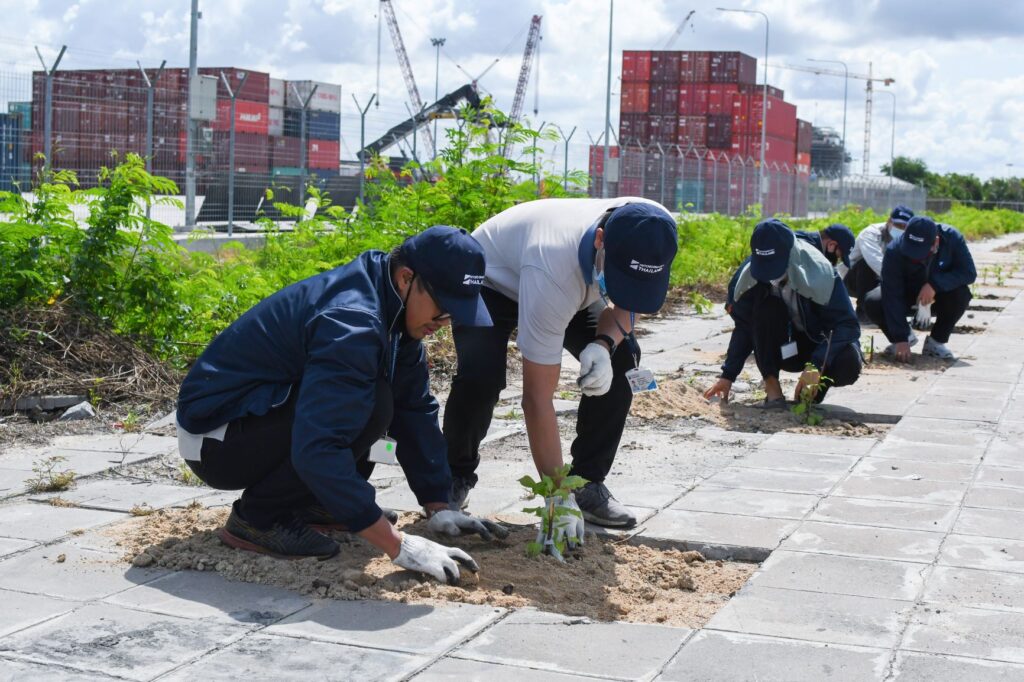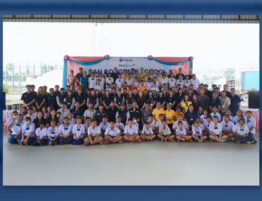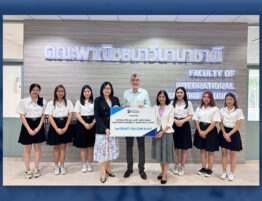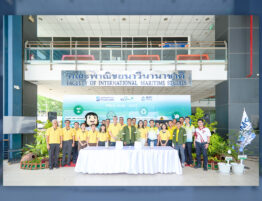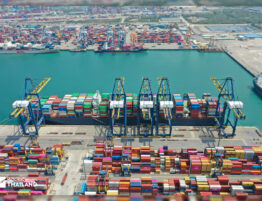
As the Managing Director of Hutchison Ports Thailand (HPT) and with the help and advice of my management team, I need to ensure that our terminal is always operating efficiently and effectively. Nowadays, ports like Laem Chabang, where we currently operate five terminals are critical infrastructure assets that serve as catalysts for economic growth and development. At the same time, port operations by their very nature can also contribute to climate change, particularly given their location in coastal zones, low-lying areas, and deltas.
With the concentration of populations and activities that often surround ports, responding appropriately to the adverse impact that port operations can have on the environment is fast becoming a significant priority for the Hutchison Ports Group. The vast sums of money required to build port infrastructure, and the crucial role of ports as part of the network of international supply-chains, means that ports are significant investments that need to be protected.
For decades, many ports around the world have been somewhat sluggish in their adoption of innovative solutions with regards to energy savings and energy efficiency. As a result, ports continue to be natural polluters if its activities are unchecked, but here at HPT, we are bringing about some positive changes to become an environmentally friendly port operation.
The environmental challenges faced by port operators is a topic I have spoken about before. Still, given its importance to HPT and our Group, I thought I would take the opportunity to provide everybody with a brief recap.
Green Port
A Green Port is a port model or concept that aims to harmonize the relationship between economic and sustainable development. The idea requires efficient organization and leadership, coherent policies and procedures, innovative thinking, and a management philosophy that embraces energy efficiency and environmental protection.
To be considered as a Green Port, port operators must meet internationally recognized criteria and standards for port management and sustainable development. Minimizing adverse environmental impacts and reducing the overall carbon footprint in the area surrounding a major port is the main objective. In this regard, I’m proud to say that we at HPT, especially at our Terminal D facility, have taken many steps to advance our port operations into a more efficient and sustainable future. In the past year alone, with Terminal D Phase 1 now fully operational and handling some of the largest container vessels currently being deployed, we have driven sustainable port development plans to the next level by deploying electrically powered remote-controlled ship-to-shore cranes and rubber-tyred yard cranes.
Also, we are now testing on-site, six autonomous self-driving trucks. If eventually deployed as part of our internal trucking fleet, the trucks will not only be more power-efficient compared to our existing conventional trucks but will be a lot quieter too. Our other already and soon-to-be-implemented innovations, such as online e-tracking services, automated gate operations, and cross-bank bill payments will also significantly reduce our paper usage, another critical step on the road to becoming “greener”.
In May, HPT launched its “Go Green” programme which has been enthusiastically embraced by our staff. The programme essentially “formalizes” some of the more obvious “low hanging fruit” environmental initiatives such as saving water and electricity, reducing the use of plastics and encouraging waste segregation – all in a controlled and measurable way. In collaboration with the Port Authority of Thailand, we have also recently planted over 200 trumpet bushes in front of Terminal D and next year, we plan to plant similar trees in front of our Terminals A and C.
Efficiency, Productivity & Sustainable Development
The number of stakeholders and players associated with a port is substantial, and therefore the port acts like a hub which brings all these elements together. If you think of the global economy generally, and the role of the maritime sector, in particular, foreign trade relies heavily on maritime transport. Economic and trade growth puts pressure on the entire maritime industry with regards to how to make it more sustainable and how to reduce any adverse impact on the environment.
Our customers, the shipping lines, together with other port users, require an efficient port. And in this regard, what we have found is that an investment in technology has helped to improve productivity, efficiency, health and safety all in a sustainable, environmentally friendly way. Our remote control ship-to-shore and yard cranes at Terminal D pretty much tick all these boxes. For instance, the built-in anti-collision, anti-lift, ship profile scanning and chassis positioning systems all help to enhance safety for both our staff, vessel operators, external truck drivers and cargo owners. Having our crane operators sit in a centralized remote control centre and essentially monitoring operations as opposed to being physically in the crane cabin reduces the exposure to noise pollution. It also helps us to exercise greater flexibility when it comes to shifting planning and the mobilization of resources. And we are again starting to see some initial improvements to remote control quay crane productivity as we make further improvements to the system and operating practices.
Looking to the Future
As our container terminals at Laem Chabang Port are operating as a testbed for the Hutchinson Ports Group, we are often among the first to receive new technologies and innovations. HPT’s goal is to achieve a symbiotic relationship with our surrounding environment. Embracing sustainable development as an economic driver will benefit HPT and the Port Authority of Thailand, which in turn, will help drive the growth of the nearby Eastern Economic Corridor and Thailand 4.0.
Finally, I’d like to add that the introduction of the concept of Green Port development embodies not only the protection of the environment but also the adoption of the idea of achieving better and safer working conditions for all of our employees. All these factors I’ve mentioned so far will eventually lead to permanent performance improvement, improving the quality of our service levels to our customer and port users, thus positioning HPT to be more competitive in what is now a very challenging market.


